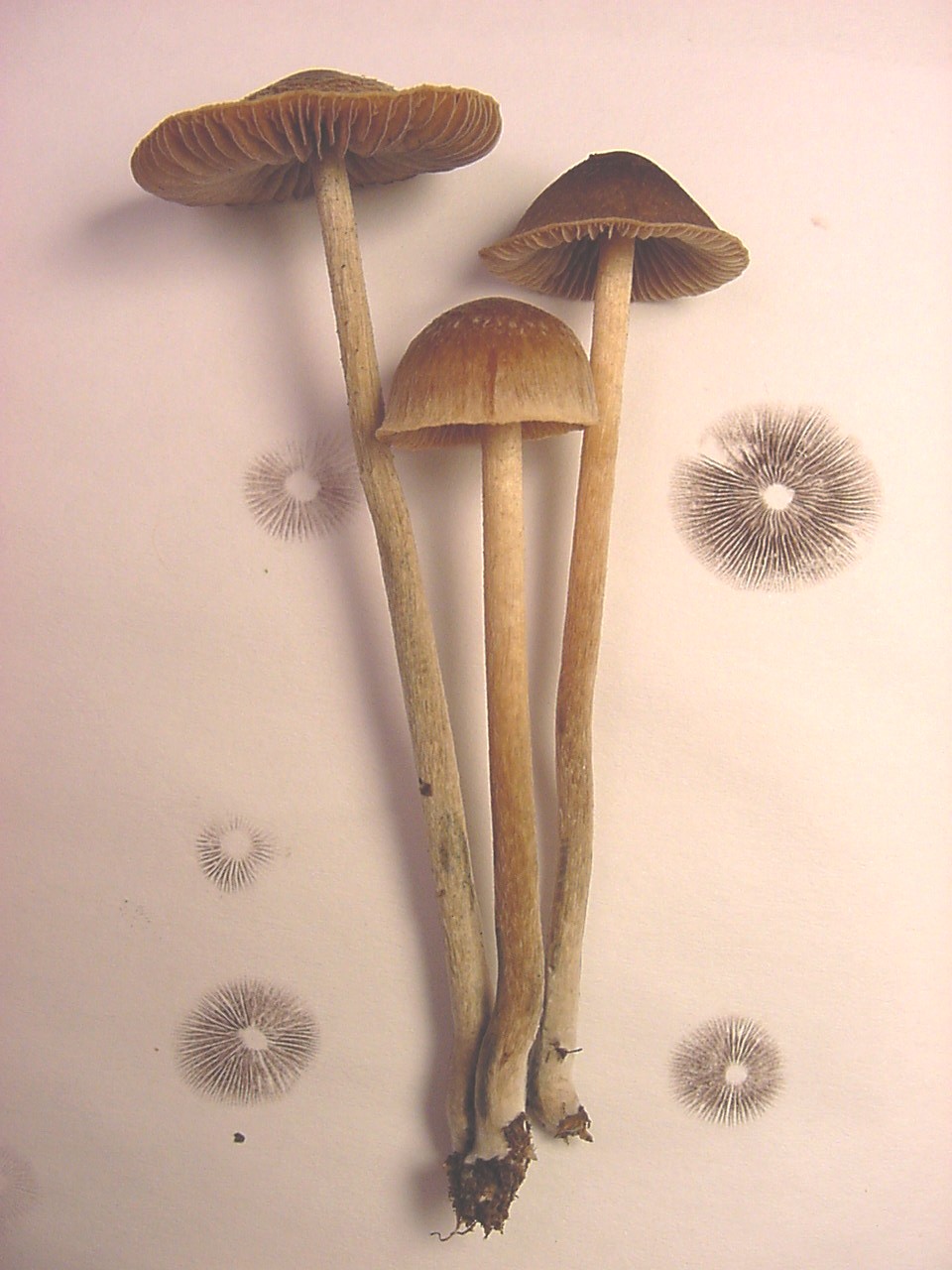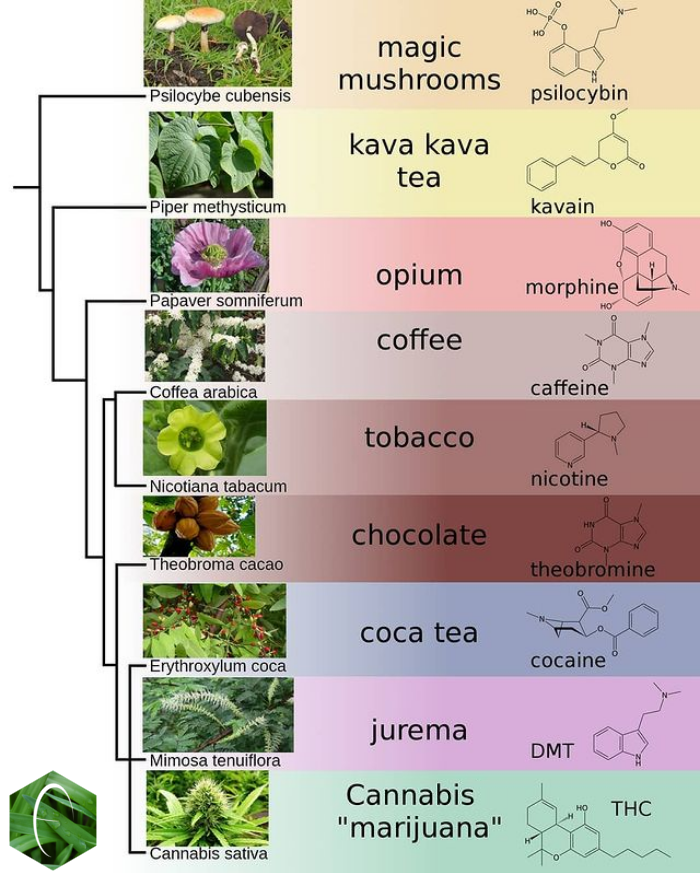|
Psilocybe Cabiensis
''Psilocybe cabiensis'' is a species of psilocybin mushroom in the family Hymenogastraceae. Described as new to science in 2004, it is found in Colombia, where it grows on bare clay soil in tropical forest. See also *List of psilocybin mushrooms Psilocybin mushrooms are mushrooms which contain the hallucinogenic substances psilocybin, psilocin, baeocystin and norbaeocystin. The mushrooms are collected and grown as an entheogen and recreational drug, despite being illegal in many count ... * List of ''Psilocybe'' species References External links * cabiensis Entheogens Psychoactive fungi Psychedelic tryptamine carriers Fungi of Colombia Fungi described in 2004 {{Hymenogastraceae-stub ... [...More Info...] [...Related Items...] OR: [Wikipedia] [Google] [Baidu] |
Gastón Guzmán
Gastón Guzmán Huerta (August 26, 1932 – January 12, 2016), a Mexican mycologist and anthropologist, was an authority on the genus ''Psilocybe''. Career He was born in Xalapa, Veracruz, in 1932. His interest in mycology began in 1955 when as a graduate student he decided to update his school's (National Polytechnic Institute) poorly kept collection of fungi. During his early field work he found a large assortment of species about which little was known at the time. This inspired him to choose fungi as the topic of his professional thesis. In 1957 Guzmán was invited by the University of Mexico to assist Rolf Singer, who would arrive to Mexico the following year to study the hallucinogenic mushroom genus ''Psilocybe''. Guzmán accepted and assisted Singer through his explorations in Mexico. While they were in the Huautla de Jiménez region, in their last day of the expeditions, they met R. Gordon Wasson. For Guzmán it was a "fructiferous meeting." In 1958, he published his ... [...More Info...] [...Related Items...] OR: [Wikipedia] [Google] [Baidu] |
Psilocybin Mushroom
Psilocybin mushrooms, commonly known as magic mushrooms, are a polyphyletic informal group of mushroom, fungi that contain psilocybin which turns into psilocin upon ingestion. Biological genera containing psilocybin mushrooms include ''Psilocybe'', ''Panaeolus'' (including ''Copelandia''), ''Inocybe'', ''Pluteus'', ''Gymnopilus'', and ''Pholiotina''. Psilocybin mushrooms have been and continue to be used in indigenous New World cultures in religious, Divination, divinatory, or Spirituality, spiritual contexts. Psilocybin mushrooms are also used as recreational drugs. They may be depicted in Stone Age rock art in Africa and Europe, but are most famously represented in the Pre-Columbian sculptures and glyphs seen throughout North, Central and South America. History Early Prehistoric rock arts near Villar del Humo in Spain, suggests that ''Psilocybe hispanica'' was used in religious rituals 6,000 years ago. The hallucinogenic species of the Psilocybe genus have a history of us ... [...More Info...] [...Related Items...] OR: [Wikipedia] [Google] [Baidu] |
Hymenogastraceae
The Hymenogastraceae is a family of fungi in the order Agaricales with both agaric and false-truffle shaped fruitbodies. Formerly, prior to molecular analyses, the family was restricted to the false-truffle genera. The mushroom genus ''Psilocybe'' in the ''Hymenogastraceae'' is now restricted to the hallucinogenic species while nonhallucinogenic former species are largely in the genus ''Deconica'' classified in the Strophariaceae. One of the two known species of '' Wakefieldia'' has been found recently to belong to this family but formal transfer cannot be made until the phylogeny of the type species of the genus is resolved. '' Psathyloma'', added to the family in 2016, was circumscribed to contain two agarics found in New Zealand. Genera *'' Alnicola'' (12 species) *''Dendrogaster'' (1 species) *'' Galera'' (4 species) *''Galerina'' (307 species) *'' Galerula'' (3 species) *''Gymnopilus'' (209 species) *''Hebeloma'' (355 species) *'' Hymenogaster'' (79 species) *'' Naematoloma' ... [...More Info...] [...Related Items...] OR: [Wikipedia] [Google] [Baidu] |
Species Description
A species description is a formal description of a newly discovered species, usually in the form of a scientific paper. Its purpose is to give a clear description of a new species of organism and explain how it differs from species that have been described previously or are related. In order for species to be validly described, they need to follow guidelines established over time. Zoological naming requires adherence to the ICZN code, plants, the ICN, viruses ICTV, and so on. The species description often contains photographs or other illustrations of type material along with a note on where they are deposited. The publication in which the species is described gives the new species a formal scientific name. Some 1.9 million species have been identified and described, out of some 8.7 million that may actually exist. Millions more have become extinct throughout the existence of life on Earth. Naming process A name of a new species becomes valid (available in zo ... [...More Info...] [...Related Items...] OR: [Wikipedia] [Google] [Baidu] |
Colombia
Colombia (, ; ), officially the Republic of Colombia, is a country in South America with insular regions in North America—near Nicaragua's Caribbean coast—as well as in the Pacific Ocean. The Colombian mainland is bordered by the Caribbean Sea to the north, Venezuela to the east and northeast, Brazil to the southeast, Ecuador and Peru to the south and southwest, the Pacific Ocean to the west, and Panama to the northwest. Colombia is divided into 32 departments and the Capital District of Bogotá, the country's largest city. It covers an area of 1,141,748 square kilometers (440,831 sq mi), and has a population of 52 million. Colombia's cultural heritage—including language, religion, cuisine, and art—reflects its history as a Spanish colony, fusing cultural elements brought by immigration from Europe and the Middle East, with those brought by enslaved Africans, as well as with those of the various Amerindian civilizations that predate colonization. Spanish is th ... [...More Info...] [...Related Items...] OR: [Wikipedia] [Google] [Baidu] |
Tropical Forest
Tropical forests (a.k.a. jungle) are forested landscapes in tropical regions: ''i.e.'' land areas approximately bounded by the tropic of Cancer and Capricorn, but possibly affected by other factors such as prevailing winds. Some tropical forest types are difficult to categorise. While forests in temperate areas are readily categorised on the basis of tree canopy density, such schemes do not work well in tropical forests. There is no single scheme that defines what a forest is, in tropical regions or elsewhere.Anatoly Shvidenko, Charles Victor Barber, Reidar Persson et al. 2005 "Millennium Ecosystem Assessment." Ecosystems and human wellbeing: a framework for assessment Washington, DC: Island Press Because of these difficulties, information on the extent of tropical forests varies between sources. However, tropical forests are extensive, making up just under half the world's forests. The tropical domain has the largest proportion of the world’s forests (45 percent), followed by ... [...More Info...] [...Related Items...] OR: [Wikipedia] [Google] [Baidu] |
List Of Psilocybin Mushrooms
Psilocybin mushrooms are mushrooms which contain the hallucinogenic substances psilocybin, psilocin, baeocystin and norbaeocystin. The mushrooms are collected and grown as an entheogen and recreational drug, despite being illegal in many countries. Many psilocybin mushrooms are in the genus '' Psilocybe'', but species across several other genera contain the drugs. General * ''Conocybe'' * ''Galerina'' * ''Gymnopilus'' * ''Inocybe'' * ''Panaeolus'' * ''Pholiotina'' * ''Pluteus'' * ''Psilocybe'' ''Conocybe'' *'' Conocybe siligineoides'' R. Heim *''Conocybe velutipes'' ( Velen.) Hauskn. & Svrcek ''Galerina'' *'' Galerina steglichii'' Besl ''Gymnopilus'' *''Gymnopilus aeruginosus'' (Peck) Singer (photo) *'' Gymnopilus braendlei'' (Peck) Hesler *''Gymnopilus cyanopalmicola'' Guzm.-Dáv *''Gymnopilus dilepis'' (Berk. & Broome) Singer *''Gymnopilus dunensis'' H. Bashir, Jabeen & Khalid *''Gymnopilus intermedius'' (Singer) Singer *''Gymnopilus lateritius'' (Pat.) Murrill *''Gymn ... [...More Info...] [...Related Items...] OR: [Wikipedia] [Google] [Baidu] |
List Of Psilocybe Species
This is a list of species in the agaric genus ''Psilocybe''. __NOTOC__ A B C D E F G H I J K L M N O P Q R S T U V U W X Y Z A *'' Psilocybe acadiensis'' (Smith) *''Psilocybe acutipilea'' (Speg.) Guzmán, psychoactive * ''Psilocybe aerugineomaculans'' (Hohn.) Singer & A.H. Smith * ''Psilocybe allenii'' Borov., Rockefeller & P.G.Werner * ''Psilocybe alutacea'' Y.S. Chang & A.K. Mills *''Psilocybe angulospora'' Yen W. Wang & S.S. Tzean * ''Psilocybe angustipleurocystidiata'' Guzmán, psychoactive * ''Psilocybe antioquiensis'' Guzmán, Saldarr., Pineda, G. Garcia & L.-F. Velazquez, psychoactive * '' Psilocybe atlantis'' Guzmán, Hanlin & C. White, psychoactive * ''Psilocybe aquamarina'' (Pegler) Guzmán * ''Psilocybe araucariicola'' P. S. Silva, likely psychoactive * ''Psilocybe aucklandiae'' Guzmán, C.C. King & Bandala, psychoactive * ''Psilocybe aztecorum'' R. Heim ** ''Psilocybe aztecorum'' var. ''bonetii'' (Guzman) Guzmán (a.k.a. ''Psilocybe bonet ... [...More Info...] [...Related Items...] OR: [Wikipedia] [Google] [Baidu] |
Psilocybe
''Psilocybe'' ( ) is a genus of gilled mushrooms, growing worldwide, in the family Hymenogastraceae. Most or nearly all species contain the psychedelic compounds psilocybin and psilocin. Taxonomy Taxonomic history A 2002 study of the molecular phylogeny of the agarics indicated that the genus ''Psilocybe'' as then defined was polyphyletic, falling into two distinct clades that are not directly related to each other. The blue-staining hallucinogenic species constituted one clade and the non-bluing species the other. The previous type species of the genus, ''Psilocybe '' (now Deconica montana), was in the non-bluing clade, but in 2010 the type species was changed to '' P. semilanceata'', a member of the bluing clade. A 2006 molecular phylogenetic study of the Agaricales by Matheny and colleagues, further demonstrated the separation of the bluing and non-bluing clades of ''Psilocybe'' in a larger, strongly supported phylogenetic tree of the Agaricales. ''Psilocybe'' had ... [...More Info...] [...Related Items...] OR: [Wikipedia] [Google] [Baidu] |
Entheogens
Entheogens are psychoactive substances that induce alterations in perception, mood, consciousness, cognition, or behavior for the purposes of engendering spiritual development or otherwiseRätsch, Christian, ''The Encyclopedia of Psychoactive Plants: Ethnopharmacology and Its Applications'' pub. Park Street Press 2005 in sacred contexts. Anthropological study has established that entheogens are used for religious, magical, shamanic, or spiritual purposes in many parts of the world. Entheogens have traditionally been used to supplement many diverse practices geared towards achieving transcendence, including divination, meditation, yoga, sensory deprivation, healings, asceticism, prayer, trance, rituals, chanting, imitation of sounds, hymns like peyote songs, drumming, and ecstatic dance. The psychedelic experience is often compared to non-ordinary forms of consciousness such as those experienced in meditation, near-death experiences, and mystical experiences. Ego dissolu ... [...More Info...] [...Related Items...] OR: [Wikipedia] [Google] [Baidu] |
Psychoactive Fungi
This is a list of psychoactive plants, fungi, and animals. Plants Psychoactive plants include, but are not limited to, the following examples: * ''Cannabis'': cannabinoids * Tobacco: nicotine and beta-carboline alkaloids * Coca: cocaine * Opium Poppy: morphine, codeine, thebaine, papaverine, noscapine, and narceine * '' Salvia divinorum'': salvinorin A * Khat: cathine and cathinone * Kava: kavalactones * Nutmeg: myristicin * Nightshade (''Solanaceae'') plants containing hyoscyamine, atropine, and scopolamine: ** ''Datura'' ** Deadly nightshade (''Atropa belladonna'') ** Henbane (''Hyoscyamus niger'') ** Mandrake (''Mandragora officinarum'') ** Other ''Solanaceae'' * Psychoactive cacti, which contain mainly mescaline: ** Peyote ** Other ''Lophophora'' ** Peruvian Torch cactus ** San Pedro cactus ** Other ''Echinopsis'' * Minimally psychoactive plants that contain mainly caffeine and theobromine: ** Coffee ** Tea (also contains theanine) ** Guarana ** Yerba Mate ** Coc ... [...More Info...] [...Related Items...] OR: [Wikipedia] [Google] [Baidu] |
Psychedelic Tryptamine Carriers
Psychedelics are a subclass of hallucinogenic drugs whose primary effect is to trigger non-ordinary states of consciousness (known as psychedelic experiences or "trips").Pollan, Michael (2018). ''How to Change Your Mind: What the New Science of Psychedelics Teaches Us About Consciousness, Dying, Addiction, Depression, and Transcendence'' Sometimes, they are called classic hallucinogens, serotonergic hallucinogens, or serotonergic psychedelics, and the term ''psychedelics'' is used more broadly to include all hallucinogens; this article uses the narrower definition of ''psychedelics''. Psychedelics cause specific psychological, visual, and auditory changes, and often a substantially altered state of consciousness.Leary, Timothy; Metzner, Ralph (1964). ''The Psychedelic Experience: A Manual Based on The Tibetan Book of the Dead'' Psychedelic states are often compared to meditative, psychodynamic or transcendental types of alterations of mind. The "classical" psychedelics, the psyc ... [...More Info...] [...Related Items...] OR: [Wikipedia] [Google] [Baidu] |






